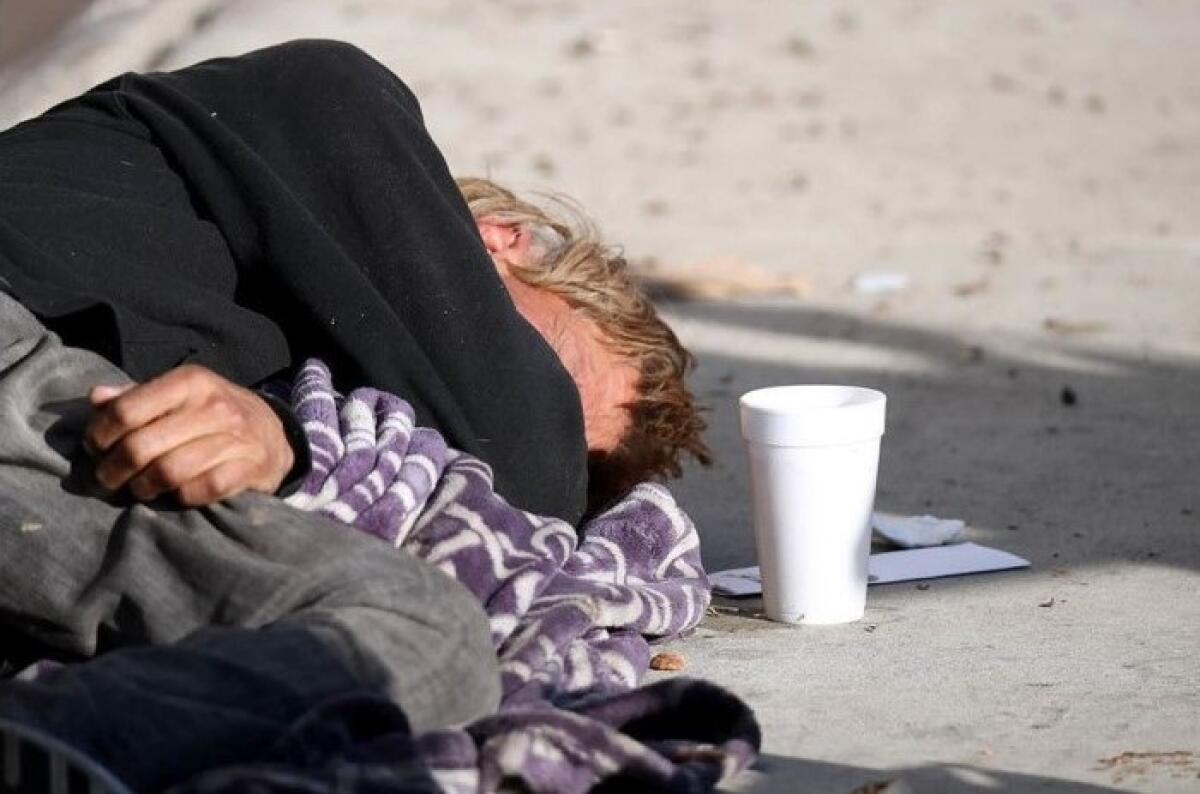Impact of pandemic on homeless shows need for housing options

- Share via
The need for housing options for the homeless is becoming all the more crucial in Orange County as the COVID-19 pandemic has ripped through homeless shelters, causing hundreds of homeless people and some staff to be stricken with the deadly illness.
According to the county, 825 homeless people have contracted COVID-19, with 625 of those being shelter residents.
Last week, the Voice of OC broke the news that 417 homeless people and dozens of staff have contracted the coronavirus during current outbreaks across 17 shelters in the county.
The conditions at the congregate shelters, where homeless people sleep near one another, exemplifies the need for timely housing options for the homeless.
Organizations like United to End Homelessness are working to make that a reality.
“The connection between health and housing is something that has always been there, and I think the COVID pandemic is illuminating that even more,” said Becks Heyhoe, executive director of United to End Homelessness.
The nonprofit just passed a milestone, housing more than 300 homeless people through its WelcomeHomeOC program since it started in 2019.
More than 160 of those people were placed in housing since the beginning of the pandemic.
The majority of those housing placements occurred since September, and another 89 households are awaiting placement.
Heyhoe said the Voice of OC story showed the importance of housing to people’s health.
“That news really did highlight that we know that housing helps have a positive influence on all areas of health— physical, mental, emotional,” Heyhoe said. “And our cost study certainly showed that as people are placed into housing, that their health stabilizes and then there’s a reduction in costs to the public as well as their health issues stabilize.”
When asked about the risk level for a homeless person being in a shelter right now, Jason Austin, director of the county’s Office of Care Coordination, said through email “there are risks associated with being in congregate settings.”
“The [Office of Care Coordination] and [Public Health Services] have been working collaboratively to implement the needed safeguards and precautions to mitigate these risks,” Austin said.
Marc Meulman, chief of operations for the county’s Public Health Services, said that five homeless people have died from COVID in the county, with one being a shelter resident. While it’s unclear how many are COVID-related, more homeless people died in Orange County in 2020 than any other year.
When asked what the county has been doing since the shelter outbreaks to keep shelter residents safer, Meulman responded: “The OC Health Care Agency (HCA) Communicable Disease Control Division (CDCD) has an outbreak response team specifically dedicated to shelters and that team works with shelters to respond to outbreaks including testing, isolation and quarantine guidance, and ongoing monitoring of the outbreak until it ends. The response team is activated when the first case is identified.”
As the rain arrives and cold nights continue, the county will open the Salvation Army thrift store on Feb. 8 for homeless people to take refuge. This is the first year that the county is not using the Santa Ana and Fullerton armories from year’s past.
Tim Houchen, a local activist who used to be homeless, mentioned during an interview that he used to be uncomfortable in the armories while being surrounded by dozens of sick and coughing people.
Austin said his office and Public Health Services have been working with the Salvation Army to implement safeguards to fortify the thrift store shelter against the virus, including reducing the capacity to up to 70 residents, requiring the use of face masks, using physical distancing and ongoing COVID-19 testing.
One of the county’s primary programs geared towards the homeless during the pandemic was Project Roomkey, a statewide program that placed homeless Californians in hotel rooms. Some activists in Orange County called Roomkey overly restrictive and likened the hotels to being run like prisons.
That program has been ramping down and is being replaced by Project Homekey and Project Toolbelt.
Project Homekey is another state initiative that entails purchasing and rehabilitating hotels, motels, vacant apartments and other buildings to house people experiencing homelessness. The county so far has purchased two hotel and motel sites — the Stanton Inn & Suites and Tahiti Motel, both in Stanton. In total, the properties will provide 132 units of non-congregate sheltering for the homeless over the next few years.
The most recent Point in Time count in 2019 found almost 7,000 homeless people in Orange County.
The Stanton Inn currently is at capacity with 72 rooms filled, and the Tahiti Motel is scheduled to begin operations later this month.
The high-risk and vulnerable homeless people enrolled in Project Roomkey were transitioned to Project Toolbelt, which is meant to connect individuals with housing opportunities by using “every housing tool in the tool belt.”
Project Toolbelt entails case managers assessing and working with the homeless to connect them with whatever kind of housing they can, including rooms for rent, sober-living homes, permanent supportive housing and motels, among other options.
“The [Office of Care Coordination] is also working with housing authorities to identify existing housing vouchers or opportunities to apply for mainstream vouchers that can be used to transition participants from temporary options to permanent housing over the upcoming months,” Austin said.
“This has been an incredible opportunity to be innovative as we engage individuals from the streets and transition them to actual housing opportunities. Through this program, individuals continue to work with Project Toolbelt providers in temporary placements that include motels for vulnerable individuals.”
All the latest on Orange County from Orange County.
Get our free TimesOC newsletter.
You may occasionally receive promotional content from the Daily Pilot.




